WSEAS Post Conference Report, May 2007, Portorose, Slovenia (104 images)
The WSEAS conferences in Portoroz (Portorose),
Slovenia, May 15-17, 2007
* 2nd IASME / WSEAS Int.Conf. on ENERGY & ENVIRONMENT (EE'07)
*
2nd IASME / WSEAS Int.Conf. on CONTINUUM
MECHANICS (CM'07)
* 2nd IASME / WSEAS Int.Conf. on WATER
RESOURCES, HYDRAULICS & HYDROLOGY (WHH'07)
*
1st IASME / WSEAS Int.Conf. on
GEOLOGY and SEISMOLOGY (GES'07)
attracted excellent contributions on fundamental developments as well as
innovative applications.
They were co-organized by the WSEAS, IASME and IARAS.
Chairmen of the event were:
Prof. Jurij Krope and Prof. D. Goricanec from Slovenia, Prof. D. Kozic from
Serbia and Prof. L. Garbai from Hungary.
They are also Editors in the Proceedings. WSEAS thanks them for their great
support.
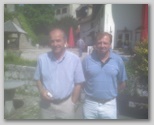 The Chairmen of the International Scientific Committee (Prof. Krope, Prof.
Goricanec, Prof.Mastorakis, Prof.Kozic and their collaborators) met over a dinner in a traditional taverna in Maribor
(just one day before the
conference) to discuss the meeting and propose updating the list of topics as
well as the appointment of new members. Different locations were discussed for
the next conference which will be reconvened in 2009. The many suggestions
received will be reviewed and implemented in the next call for papers.
Jurij
also mentioned the possibility of publishing
extended versions of a small number of high-quality contributions with Springer Verlag or WSEAS Journals.
He also underlined how important is the
Energy and Environmental Engineering Series of Books of the WSEAS.
The Chairmen of the International Scientific Committee (Prof. Krope, Prof.
Goricanec, Prof.Mastorakis, Prof.Kozic and their collaborators) met over a dinner in a traditional taverna in Maribor
(just one day before the
conference) to discuss the meeting and propose updating the list of topics as
well as the appointment of new members. Different locations were discussed for
the next conference which will be reconvened in 2009. The many suggestions
received will be reviewed and implemented in the next call for papers.
Jurij
also mentioned the possibility of publishing
extended versions of a small number of high-quality contributions with Springer Verlag or WSEAS Journals.
He also underlined how important is the
Energy and Environmental Engineering Series of Books of the WSEAS.
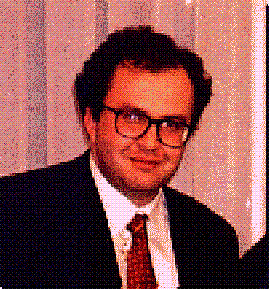 Professor
Mastorakis (WSEAS Executive Director) opened the meeting by explaining the
importance of the conference programme for the work of WSEAS and the deliberate
effort made to bring together scientists from many different countries in these
meetings. The programme also gives WSEAS access to a pool of talent within the
international scientific community. It brings together participants from all
over the world, interacting in a friendly atmosphere. This is an important
consideration which greatly contributes to the success of the series.
Professor
Mastorakis (WSEAS Executive Director) opened the meeting by explaining the
importance of the conference programme for the work of WSEAS and the deliberate
effort made to bring together scientists from many different countries in these
meetings. The programme also gives WSEAS access to a pool of talent within the
international scientific community. It brings together participants from all
over the world, interacting in a friendly atmosphere. This is an important
consideration which greatly contributes to the success of the series.
The additional features of this
multiconference were
1) Publication of the Proceedings in 3 media: hard-copy, CD, E-Library
(A)
Books in the Energy and Environmental Engineering Series of the WSEAS
(see details, contents, author
indices and editors below) with ISBN and ISSN indexed by the major
Citation Indexes:
www.worldses.org/indexes
(B)
CD-ROM Proceedings with pages' numbers
with ISBN and ISSN indexed by the major Citation Indexes:
www.worldses.org/indexes
(C)
E-Library:
http://www.wseas.org/online
and possible:
(D)
JOURNAL PUBLICATION: Only authors of high
- quality papers of archival value (they have been recommended by the Chairmen)
have been invited (after the end of the conference) to send extended versions of
their papers to the international WSEAS Journals after the conference. See the
procedure below.
2) WSEAS gave a very strong and important tool to all the participants:
A new username and password WITHOUT EXPIRY DATE for on-line access in the WSEAS
Conference proceedings FOR EVER.
3) WSEAS gave also in the CD-ROM the Proceedings of the previous
conferences EE'06, WHH'06, CM'06 from Chalkida, Greece (May of 2006).
So, the participants were really very happy, because they had the opportunity to
study the proceedings of the previous year.
4) Because the WSEAS will maintain the same policy in 2008, the accepted and
presented papers will be available and readable in the CD-ROM that we will
distribute in Cambridge, UK in Febr. of 2008 where we will have the same
conferences.
5) Rich cultural and social part as usual in WSEAS events. The importance of
these conferences can be proved by the impact of these conferences in 2006: See,
please http://www.wseas.org/reports
6) The conference Books (Hard-Copy Proceedings), CD-ROM proceedings and
(Journals with selected papers) published by WSEAS Press continue to sell for a
long time after the meeting has taken place. This is another demonstration of
the prestige the scientific community attribute to the meetings organised by the
WSEAS.
BOOKS (Hard Copy of the Proceedings)
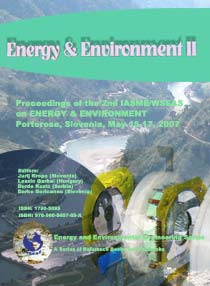 Editors:
Jurij Krope (Slovenia),
Laszlo Garbai (Hungary),
Dorde Kozic (Serbia),
Darko Goricanec (Slovenia), pages 320, price: 80 EUR,
(details)
Editors:
Jurij Krope (Slovenia),
Laszlo Garbai (Hungary),
Dorde Kozic (Serbia),
Darko Goricanec (Slovenia), pages 320, price: 80 EUR,
(details)
[Contents],
[Order],
[Full PDF of the
Papers], [Help]
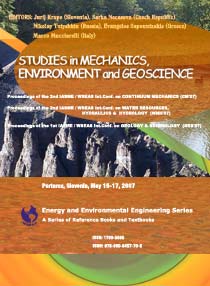 Editors:
Jurij Krope (Slovenia),
et all, pages 330, price: 80 EUR
(details)
Editors:
Jurij Krope (Slovenia),
et all, pages 330, price: 80 EUR
(details)
[Contents],
[Order],
[Full PDF of the
Papers], [Help]
Conference Statistics:
Submitted papers: 367
Accepted papers: 178
Click a picture to see a larger view-->
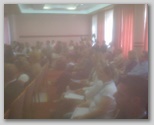
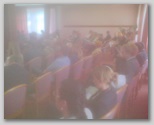
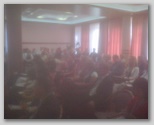
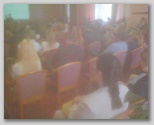
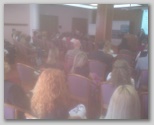
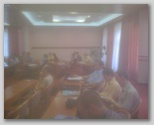
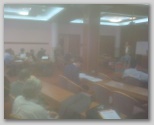
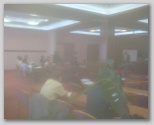
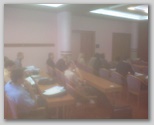
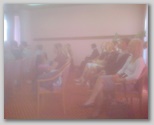
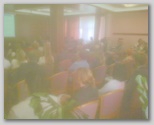
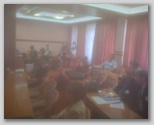
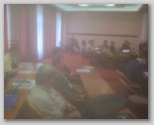
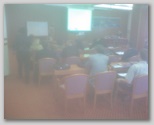
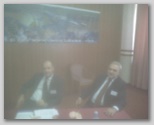
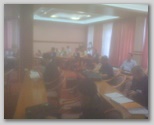
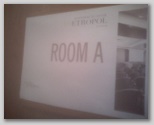
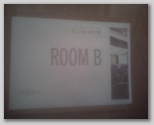
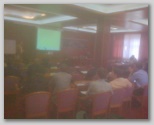
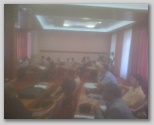
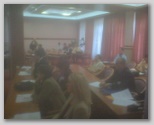
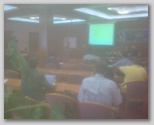
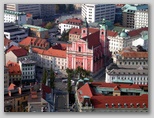
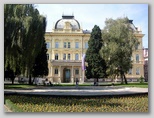
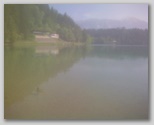

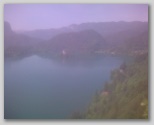
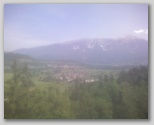
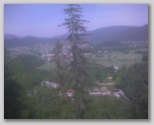
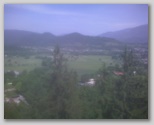
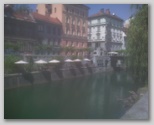
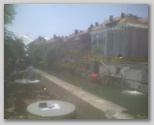
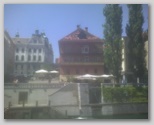
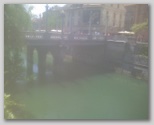
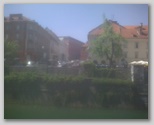
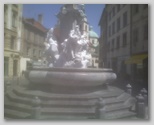
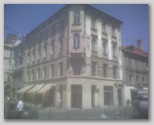
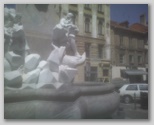
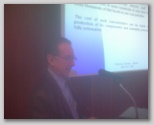
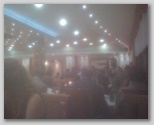
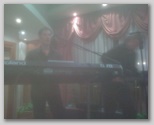
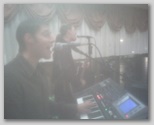
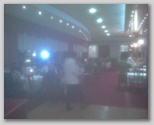
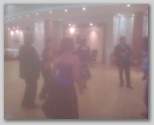
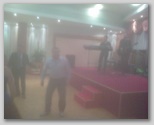
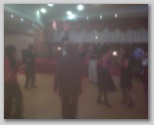
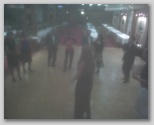
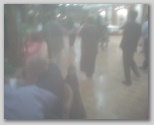
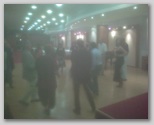
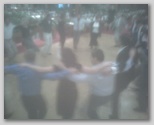
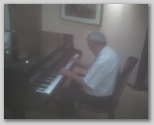
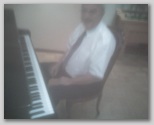
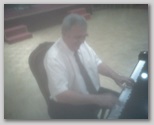
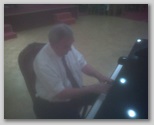
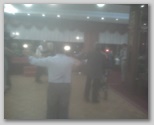
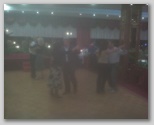
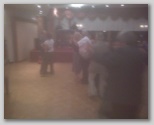
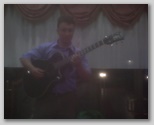
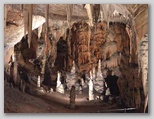
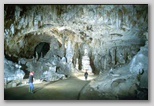

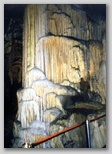
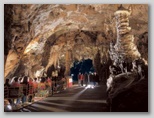

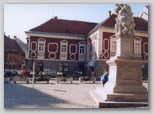
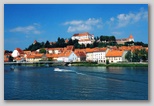
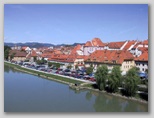
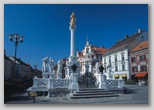
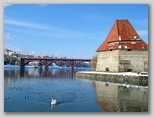

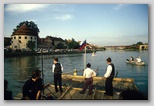
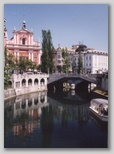
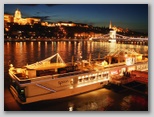
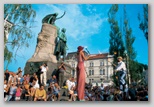
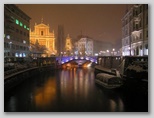
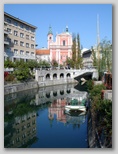
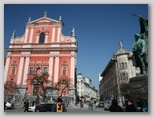
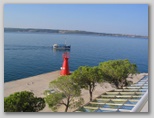
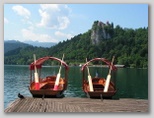
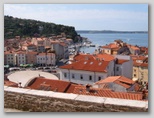
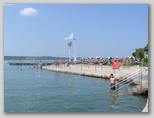
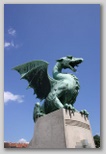

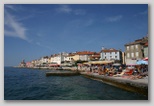
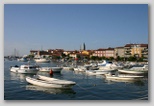
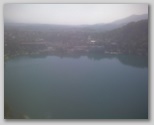
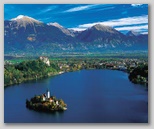
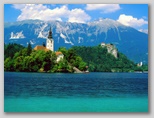
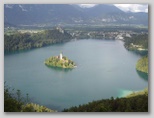
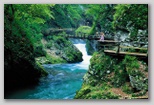
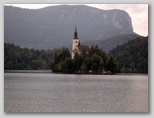
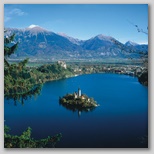
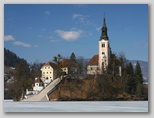
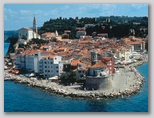
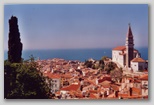
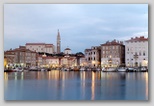
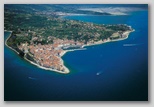
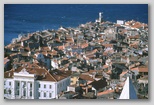
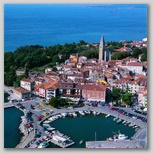


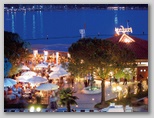
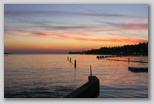

.: Location: About Portorose (Portoroz):
Portorose, called by many, not unduly, “the port of roses”. As a health and
climatic resort of an international reputation it was known as early as the
previous century. The sheltered position protects the place against north winds
also in winter time. Tourists will find here everything they may be looking for
during their holidays. Lying on the northern side of Piran Bay, this attractive
modern seaside resort is one of the largest and most important tourist centres
in both Slovenia and the Istrian peninsula. The rich offer includes great
restaurants, Casino gambling house, Marina and Secovlje Airport, new Thermal
Baths and the proud old Palace Hotel, a sandy beach, numerous sporting grounds,
the congress and performance centres. In summer, Portoroz turns to a small –
scale Europe proper. With its mild Mediterranean climate, numerous hotels,
private rooms and campsites, this is indeed a place suitable for every
generation; it also makes a good centre for exploring the coast as well as the
Karst district and the Istrian peninsula surroundings. In autumn and winter the
lively summer holiday resort transforms into a congress centre and hosts many a
cultural-entertainment and sporting event. Where the Gulf of Trieste, as an
integral part of Adriatic, reaches Closest to the centre of Europe, there are
situated the Coast and Karst. The Slovene Coast (the Portorož Riviera) measures
a little over 46 kilometres, stretching from the national border with Italy (Debeli
rtiè) to the border with Croatia, running from some length along Dragonja River.
The Slovene Coast is divided into the communes of Koper, including the tourist
places in Ankaran and Zusterna, of Izola, with the tourist settlements of Simon
Bay and Belvedere, and Of Piran, a picturesque historic town with the central
tourist resort of Portoroz. Thanks of favourable transport communications (the
Portoroz Airport, the Koper Railway station, the Ports of Koper, Izola and Piran,
the Izola and Portoroz Marinas, the nearby town of Trieste from where starts the
modern highway), the entire district is relatively quickly accessible. Towns and
settlement are situated “at the door” of Istra and on the way back “at the door”
of Europe. Here by the Coast starts the route to Jadran, the region representing
the very starting point for numerous trips and neighbourhood, to Porec, Pula,
Trieste, Venice, Karst. The riches of the sea, fertile soil, mild climate,
evergreen plants and natural beauties, historic traces of turbulent past and
primarily, a diversified and quality tourist offer, these are but a few of
things the Coast and Karst can offer their visitors. There are not many spots in
Europe where such variety can be found on few square kilometres. The residents
of the “Portoroz Riviera” include, beside the majority of Slovenes, also the
Italian ethnic group. Two languages, Slovene and Italian, share equal rights in
this bilingual region. The coastal zone is one of the warmest regions in
Slovenia. There are many sunny days and little amount of precipitate.
Characteristic of the regions climate are mild winters (the temperature only
rarely drops under zero) and not to hot summers. This is the very reason those
who cannot stand the summer heat of the southern Mediterranean are coming here.

Click here to see a view from METROPOL hotel (5 Star) where the
conferences took place. Also, the same hotel has two other buildings (annexes)
in the same campus, ranked as 4 Star and 3 Star Hotels, campus where several
WSEAS Participants were accomodated in very cheap rates
.: Scientific Part
Review Process: Each paper was reviewed at least by 3 independent
reviewers. The WSEAS Secretariat sent each paper to 5 reviewers. Some papers
received reviews from 5 different referees. The WSEAS Secretariat forwarded
these comments by personalized emails to the responsible for the correspondence
author. The full list of the reviewers will be available in the web page:
http://www.worldses.org/reviewers.htm

Professor Krope - Professor Mastorakis
.: What is the Permanent Procedure for additional Journal
publication for a very small number of High-Quality Papers presented in the WSEAS
Conferences in Portorose (after the recommnedation of Chairmen).
May 21, 2007
Dear Authors of papers that were presented in the WSEAS Conferences in Portoroz,
Slovenia
We have started now the evaluation of extended versions of your papers for
possible inclusion in WSEAS journals after new review.
INTRODUCTION: You know that our goal is to maintain very strong
international journals, to increase the impact of our beloved WSEAS
Transactions, really top journals as they really are. To this end, we need
only high quality papers, breakthrough works of archival value, i.e. papers
that are well written from any point of view, completed studies (with their
numerical examples or experiments that must be compared with the previous
results in the literature), excellent english and of course correct WSEAS
format. The papers also must be substantially extended version of the paper that
was presented in the conference (with more than 40% new material). We need
papers that will attract the attention of other scholars citing them increasing
our impact. In the next few years, the WSEAS transactions must be in every
academic library, in every corner of the earth. To this end, we need your high
quality contribution.
HOW TO PROCEED:
a) Check very carefully if your idea is really important, breakthrough in your
field and can appear in a Journal of the quality and the level of the WSEAS
Transactions. If you doubt, do not send it so easily. Your paper must not be
only a good idea. It must be a complete study with theoretical background,
complete bibliographical references; without grammatical and syntactical errors.
For theoretical works: full comparison with previous published papers is
necessary. We need numerical examples, applicability of the method,
originality, novelty and directions for future research. For experimental or
computational works: full comparison with previous published papers is
necessary. We need real experiments with the necessary
documentation, while for computational work, we need full benchmarks. Of course
along discussions for the applicability of the method, originality, novelty and
directions for future research.
b) Complete the extended version of your paper until June 30 and send it until
June 30, by email to me
You must receive an email notification from us. Use only the email address:
selected_papers_slovenia (AT) worldses.org, replace (AT) with @
c) If your extended version fulfills the paragraph a), then we
will send it to 3 independent Reviewers outside
your country. If not, we are entitled to reject it from this early stage
informing you properly. The positive answer of the 3 reviewers is necessary
(attention: 2 yes and 1 no implies NO, i.e. rejection).
d) We will collect the reviewers' remarks and will send them again to you for
acceptance/ acceptance after minor revision / acceptance after major revision /
rejection
e) Possibly new rounds of review will be needed.
f) No additional fee is needed in case of acceptance.
After all this procedure, the accepted papers that come from WSEAS Conferences
in Slovenia will be published in
* WSEAS Transactions on ENVIRONMENT and DEVELOPMENT
* WSEAS Transactions on APPLIED and THEORETICAL MECHANICS
IF: you want another journal, or if you miss the deadline of June 30, or if your
paper was not presented in the WSEAS Conferences, THEN: you can upload it quite
independently
as regular paper from the WSEAS Site for the Journals:
http://www.worldses.org/journals/index.html
The final list of the papers must have the approval of Prof. Nikos Bardis, 3
Reviewers, and of course the Editor-in-Chief of the particular Journal. i.e. 5
persons: 3 Reviewers, Guest Editor and the Editor-in-Chief of the particular
Journal. We hope to help to to maintain the WSEAS Transactions, top journals
Reply only to this email address: selected_papers_slovenia (AT) worldses.org
with WSEAS in the Subject
The final list of the papers must have the approval of Prof. Nikos Bardis, 3
Reviewers, and of course the Editor-in-Chief of the particular Journal. i.e. 5
persons: 3 Reviewers, Guest Editor and the Editor-in-Chief of the particular
Journal. We hope to help to to maintain the WSEAS Transactions, top journals in
the electrical and computer engineering
WSEAS sent a full report of the whole review process and the whole
correspondence to the following international indexes that have recognized
officially the Validity and the Reputation of the WSEAS Conferences: (see also:
www.worldses.org/indexes )
.: Best Student Papers:
The Organizing Committee received the forms that the Session Chairmen filled in
after the end of their Sessions and after additional evaluation and discussion
decided the following.
The Criteria were
a) originality and scientific impact
b) good presentation
c) paper presented by a student
The results of this evaluation are:
Conference: WHH
Won by: Boussad Hamroun
Title: Port-Based Modelling for Open Channel Irrigation Systems
Authors: Boussad Hamroun, Laurent Lefevre, Eduardo Mendes
Conference: GES
Won by: Dominik Ehret
Title: Numerical Modelling of Site Effects – Influences of Groundwater Level
Changes
Authors: Dominik Ehret, Dieter Hannich, Sascha Schmitt, Gerhard Huber
Conference: CM
Won by: Xin Zhao
Title: The Dynamic Stress State of the Wheel-Rail Contact
Authors: Xin Zhao, Zili Li, Coenraad Esveld, Rolf Dollevoet
Conference: EE
Won by: Martin Wolter
Title: Modeling of Switching Operations using Fault Matrix Method
Authors: Martin Wolter, Bernd R. Oswald
Indexes:
PROCEEDINGS: The Proceedings related to the Conference are covered by:
1. ISI (ISINET)
2. INSPEC (IET, former IEE)
3. CSA (Cambridge Scientific Abstracts)
4. ELSEVIER and Elsevier Bibliographic Database
5. ZENTRALBLATT
6. ULRICH
7. MATHSCINET of AMS (American Mathematical Society)
8. MATHEMATICAL REVIEWS of AMS (American Mathematical Society)
9. Directory of Published Proceedings
10. Computer Science Bibliography Administrator
11. American Chemical Society and its Index: Chemical Abstracts Service
12. European Library in Paris (France)
13. DEST Database (Australia)
14. Engineering Information
15. SCOPUS
16. EBSCO
17. EMBASE
18. Compendex (CPX)
19. GEOBASE
20. BIOBASE
21. BIOTECHNOBASE
22. FLUIDEX
23. OceanBase
24. BEILSTEIN Abstracts
25. World Textiles
26. MEDLINE
27. British Library
28. National Library of Greece
29. German National Library of Science and Technology
30. IARAS Index
JOURNALS:
The authors of the best papers have been invited to send extended versions of
their papers to various international reputable journals. However, these papers
must be of high-quality (break-through work).These journals are covered by:
1. ISI through the INSPEC (IEE)
2. INSPEC (IET, former IEE)
3. CSA (Cambridge Scientific Abstracts)
4. ELSEVIER and Elsevier Bibliographic Database
5. ZENTRALBLATT
6. MATHSCINET of AMS (American Mathematical Society)
7. ULRICH
8. MATHEMATICAL REVIEWS of AMS (American Mathematical Society)
9. Computer Science Bibliography Administrator
10. British Library
11. American Chemical Society and its Index: Chemical Abstracts Service
12. European Library in Paris (France)
13. DEST Database (Australia)
14. Swets Information Services
15. Engineering Information
16. SCOPUS
17. EBSCO
18. EMBASE
19. Compendex (CPX)
20. Geobase
21. BIOBASE
22. BIOTECHNOBASE
23. FLUIDEX
24. OceanBase
25. BEILSTEIN Abstracts
26. World Textiles
27. MEDLINE
28. Mayersche
29. Index of Information Systems Journals
30. National Library of Greece
31. IARAS Index
PLENARY SPEAKERS:
PLENARY LECTURE 1
Legal Regulation of the European Internal Market in Energy
Tina Krope
Ministry of Economy
Directorate for Foreign Economic Relations
Slovenia
Abstract: The process of liberalising the energy and gas market in Europe is
something the EU has struggled with for the past 15 years. To establish an
internal market in the EU electricity and gas sectors was a priority in the
Single Market programme and Lisbon Agenda in March 2000 in improving European
competitiveness. It is a stated aim of the European Commission, Member States,
regulatory authorities, and others, to work towards the creation of a single,
efficient and effectively competitive energy market. There are a number of
reasons that underpin the launching of single European energy market. The
integration of markets is expected to lower the energy prices and generate
several advantages, such as increased security of supply, the latter being a
great concern of all the EU countries, because the European economy is steadily
demanding more and more energy, essentially based on fossil fuels, which make up
four-fifths of its total energy consumption, almost two-thirds of which it
imports. In 30 years’ time, 90% of oil is likely to be imported; consequently,
rising import ratios may lead to the risk of an interruption or difficulties in
supply. The high oil and gas prices we faced recently have raised major
questions regarding scarcity of these resources. The recognition that these
resources are finite and that the current high prices are, on the other hand,
not as relevant considering the fact that there are sufficient reserves for the
next few decades. There are other relevant factors affecting the price such as
the increased import dependency of import consuming countries. Secure and
affordable supplies can no longer be taken for granted, as the global energy
demand is increasing and the oil and gas reserves are declining. On one hand, it
is argued that security of supply is an ongoing concern; nevertheless, an
integrated and competitive internal energy market will more than likely deliver
secure supply, via a larger and more flexible market, and competition-inspired
efficiency gains, innovation and development. To deliver the common objectives
of the EU - secure, sustainable and competitive energy - an approach based
solely on 25 individual energy policies is not sufficient. After all,
experiences from gas and electricity liberalisation, wherever it has taken place
around the world, have always been positive, and are expected to be such in the
EU as well. The opening up of the markets to all non-domestic consumers from
July 2004 and to all consumers in July 2007 requires a series of measures to be
put in place to enable new operators, the drivers of competition, to enter the
market and serve the very many new eligible customers. We will have to deal with
a completely different scale of things, one of the crucial changes being the
increased number of eligible customers from July 2007 onwards. The aim of
achieving a fully liberalised and integrated energy market with lower energy
prices and improved security of supply is for the benefit of the consumers, and
at the same time, potential investors in new projects require a stable
regulatory framework and the assurance that they have equal access to all
customers in the EU. Besides the transposition and implementation of the new Gas
and Electricity Directives into national legislation of the 25 Member States,
the task of ensuring compliance should not fall exclusively on Commission’s
shoulders. In order for the consumers to have a de facto single European grid,
the work of national regulatory authorities is of a great importance, and the
work conducted through the European Regulators Group for Electricity and Gas (ERGEG);
the benefits for the consumers and the rights enjoyed by the European citizens
are formed through a constructive dialogue with public authorities within the
context of good governance.
PLENARY LECTURE 2
SMA Structures Computations
Prof. M. L. Boubakar
Laboratoire de Mecanique Appliquee Raymond Chaleat,
Institut FEMTO-ST, UMR-CNRS 6174
Universite de Franche-Comte, ENSMM, UTBM
24, rue de l’Epitaphe, 25000 Besancon
FRANCE
Abstract: The growing interest in smart structures technologies has led in the
last decades to the formulation of a variety of constitutive models for shape
memory alloys (SMA). However, most of these models are so demanding from a
computational standpoint that, except some exceptions, their application has
been limited to only one-dimensional situations. In this work attention is
focused on a phenomenological model of isotropic pseudoelasticity emanating from
that, and on its numerical integration. The constitutive model under
consideration is formulated in the framework of internal variables theory of
inelastic behaviours, namely, by defining the transition criteria determining
the onset of phase transitions (SMA pseudoelasticity is a reversible behaviour
associated with a stress-induced solid-solid phase transition from a parent
phase called austenite to a product phase called martensite) in a way completely
analogous to the loading functions of plasticity theory. Although consistent
with classical rate-independent behaviour modelling, this approach requires,
however, suitable modifications of numerical algorithms originally designed for
elastoplasticity. Return mapping algorithms are discussed in detail hereafter.
In order to perform finite strains analysis, a closed form of the proposed
modelling for small strains is developed within the context a non-material
rotating frame formulation. In this context, a constitutive frame is suggested
to take non-proportional loading into account.
PLENARY LECTURE 3
Will we ever tackle the Problem of Environmental Pollution?
Prof. Aart Sterkenburg
Laboratory for Ecological Risk Assessment
National Institute for Public Health and the Environment RIVM
P.O Box 1, 3720 BA Bilthoven, The Netherlands
Abstract: In the past decennia, the state of the Dutch environment has improved
considerably, mainly due to the acknowledgement by policy, in the seventies and
the eighties, that action had to be taken with respect to the worsening state of
the air, soil, and surface and ground water, and due to the subsequent
regulations enforced in later years. The latter came both from the national
government and international agreements. Many emissions of substances have
diminished, especially of those originating from sources that could be pointed
to unambiguously as being responsible for environmental pollution. Obvious
examples are the switch to unleaded petrol in order to prevent the release of
toxic lead into the air, the ban on the use of haloalkanes in the Montreal
protocol in order to protect the ozone layer, but also the direct measures,
within the scope of REACH, that Industry must take to prevent emissions. Yet,
worrying amounts of pollutants still enter the environment. In densely populated
areas the problem of particulate matter in the air is extremely difficult to
tackle, just as is the continuing pollution of the surface water by release of
chemicals from sediments or the leaching of substances form the soil into the
ground water. In most cases these processes can be traced back to the diffuse
sources as registered in the E-PRTR database. Nowadays it has become a challenge
to consider ecology with sustainable economic growth. What price are we prepared
to pay for an environment that is clean and that will remain clean in the
future? This talk will focus on the problems that are caused by the continuing
release of substances into the environment after the enforcement, and the
relative successes, of the first most obvious and most cost-effective measures.
.:Social Part (Coffee-Breaks, Banquet, Excursions)
 The Coffee, Tea, Milk, Sweets, Cakes and Pastries were available for the Guests.
WSEAS thanks Prof. Krope and Prof. Goricanec for their great support. The
Banquet was superb. Participants enjoyed a wonderful self-service buffet (more
than 50 courses)
The Coffee, Tea, Milk, Sweets, Cakes and Pastries were available for the Guests.
WSEAS thanks Prof. Krope and Prof. Goricanec for their great support. The
Banquet was superb. Participants enjoyed a wonderful self-service buffet (more
than 50 courses)
 As
you can see in the pictures, our co-chairman Prof. D. Kozic gave us also a very
nice concert in piano,
(see the photos
above) ,
As
you can see in the pictures, our co-chairman Prof. D. Kozic gave us also a very
nice concert in piano,
(see the photos
above) ,
 another colleague played also for us guitar, while a professional
orchester offered to WSEAS participants happy moments with
local music,
international music and unlimited dance.
another colleague played also for us guitar, while a professional
orchester offered to WSEAS participants happy moments with
local music,
international music and unlimited dance.

Photo from the Piano Resital of Prof. D.Kozic (University of Belgrade)





Several Excursions organized by Prof. Krope and Prof. Goricanec in
Postojna with the famous cave (largest in Europe, see pictures above),
Portorose, Ptuj (the oldest town in Slovenia), Izola, Piran (the
picturesque harbour with mediterranean colors), Maribor and Lujbliana took place before and after the WSEAS Conferences
(see the photos
above).
 The Chairmen of the International Scientific Committee (Prof. Krope, Prof.
Goricanec, Prof.Mastorakis, Prof.Kozic and their collaborators) met over a dinner in a traditional taverna in Maribor
(just one day before the
conference) to discuss the meeting and propose updating the list of topics as
well as the appointment of new members. Different locations were discussed for
the next conference which will be reconvened in 2009. The many suggestions
received will be reviewed and implemented in the next call for papers.
Jurij
also mentioned the possibility of publishing
extended versions of a small number of high-quality contributions with Springer Verlag or WSEAS Journals.
He also underlined how important is the
Energy and Environmental Engineering Series of Books of the WSEAS.
The Chairmen of the International Scientific Committee (Prof. Krope, Prof.
Goricanec, Prof.Mastorakis, Prof.Kozic and their collaborators) met over a dinner in a traditional taverna in Maribor
(just one day before the
conference) to discuss the meeting and propose updating the list of topics as
well as the appointment of new members. Different locations were discussed for
the next conference which will be reconvened in 2009. The many suggestions
received will be reviewed and implemented in the next call for papers.
Jurij
also mentioned the possibility of publishing
extended versions of a small number of high-quality contributions with Springer Verlag or WSEAS Journals.
He also underlined how important is the
Energy and Environmental Engineering Series of Books of the WSEAS. Professor
Mastorakis (WSEAS Executive Director) opened the meeting by explaining the
importance of the conference programme for the work of WSEAS and the deliberate
effort made to bring together scientists from many different countries in these
meetings. The programme also gives WSEAS access to a pool of talent within the
international scientific community. It brings together participants from all
over the world, interacting in a friendly atmosphere. This is an important
consideration which greatly contributes to the success of the series.
Professor
Mastorakis (WSEAS Executive Director) opened the meeting by explaining the
importance of the conference programme for the work of WSEAS and the deliberate
effort made to bring together scientists from many different countries in these
meetings. The programme also gives WSEAS access to a pool of talent within the
international scientific community. It brings together participants from all
over the world, interacting in a friendly atmosphere. This is an important
consideration which greatly contributes to the success of the series.
 Editors:
Jurij Krope (Slovenia),
Laszlo Garbai (Hungary),
Dorde Kozic (Serbia),
Darko Goricanec (Slovenia), pages 320, price: 80 EUR,
(details)
Editors:
Jurij Krope (Slovenia),
Laszlo Garbai (Hungary),
Dorde Kozic (Serbia),
Darko Goricanec (Slovenia), pages 320, price: 80 EUR,
(details)
 Editors:
Jurij Krope (Slovenia),
et all, pages 330, price: 80 EUR
(details)
Editors:
Jurij Krope (Slovenia),
et all, pages 330, price: 80 EUR
(details)









































































































